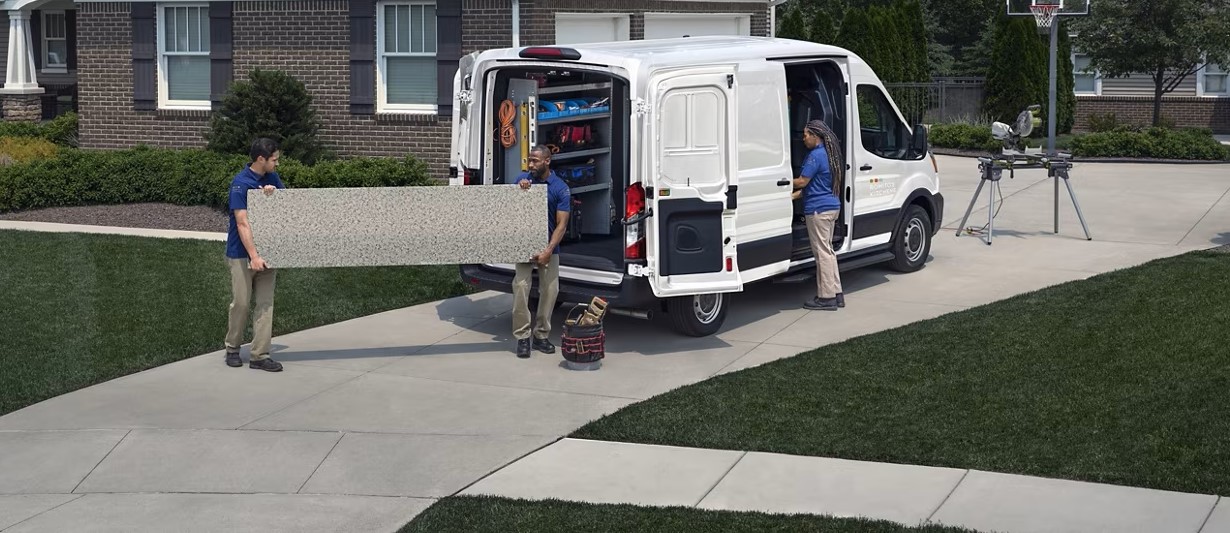Ford Pro Offsetting EV and Pickup Declines in Q1Ford Pro Offsetting EV and Pickup Declines in Q1
Ford’s first-quarter earnings drop from a year ago, but still manage to beat Wall Street forecasts by overachieving on commercial vehicles and software services.

Ford is being challenged by slowing sales of electrified vehicles and discounting of the ones they do sell, as well as intentionally slowing deliveries of high-profit F-Series trucks to deal with quality issues before they reach customer driveways.
But a surging Ford Pro business helped the automaker beat Wall Street earnings forecasts. Despite a 24% drop in first-quarter income, compared with the same quarter a year ago, Ford still managed to earn $1.33 billion or $0.49 per share, excluding one-time items, beating analyst forecasts of $0.43 per share.
Revenue for the quarter was up 3.2% to $42.78 billion, but that fell short of Wall Street estimates of $42.93 billion.
Ford Blue, the automaker’s combustion engine unit, made $905 million before taxes, down $1.7 billion from a year ago, a 13% decline. The company blames the drop on lower inventories and the selection of F-150 pickups produced due to updating factories for the new model. CEO Jim Farley also says some truck deliveries were slowed so product could be more rigorously checked before shipping to dealers. He says that action prevented some 12 likely recalls.
John Lawler, chief financial officer, says he expects Ford to recover sales volume and mix of higher-profit truck trims later in the year, positioning the company for a stronger finish for 2024. Ford affirmed its full-year guidance of making between $10 billion and $12 billion in operating income on the year.
Ford Pro, the unit that sells fleet and commercial vehicles, and fleet management software services, posted pretax earnings of just over $3 billion, more than double the same period last year. Ford Pro revenue was up 36%.
“We’re very profitable now, but we believe that this business will be profitable and durable for many years to come,” Farley says of the commercial unit. Farley notes the commercial unit earned as much in the first quarter as it did for the whole year three years ago.
Model e, Ford’s electric-vehicle business, lost $1.3 billion, almost $600 million more than the first quarter of last year. The company is aggressively cutting costs, including delaying production and release of a family of battery-electric SUVs, but heavy discounting of the Ford F-150 Lightning and Mustang Mach-E hit the unit hard.
Farley reiterates that the company is working to have hybrid versions of all its vehicles in showrooms by 2030 as it also develops EVs to meet federal mandates. A revised rule for pushing automakers to sell more EVs to meet pollution-reduction targets, the Biden Admin. is allowing plug-in hybrids – vehicles that combine gas engines and EV-like batteries – to play a bigger role in the electric transition. The new rule is targeting 35% to 56% for battery-electrics in 2032, and 13% to 36% for plug-in hybrids.
Farley said in February that Ford is fast-tracking a lower-cost EV architecture that will underpin the company’s next generation of EVs. Farley also noted the delays on some of Ford’s EVs will benefit from the development of cheaper battery technology that will help make EVs profitable faster. The CEO said Ford is committed to its EVs being profitable in their first year of sales.
“We're going to build a sustainably profitable EV business," Farley said. "And it needs to return the cost of capital on its own and not be subsidized.”
Election-year economics can be bumpy, and there is still some persistent inflation in some key consumer categories. But overall, the stock market and economic growth is strong, and unemployment is at historic lows. And while industry sales are forecasted to be off 2%-3% this year, notes CFO Lawler, new-vehicle purchases remain robust.
“So far, the consumer has stayed relative strong, industry has remained strong,” he says.
About the Author
You May Also Like

